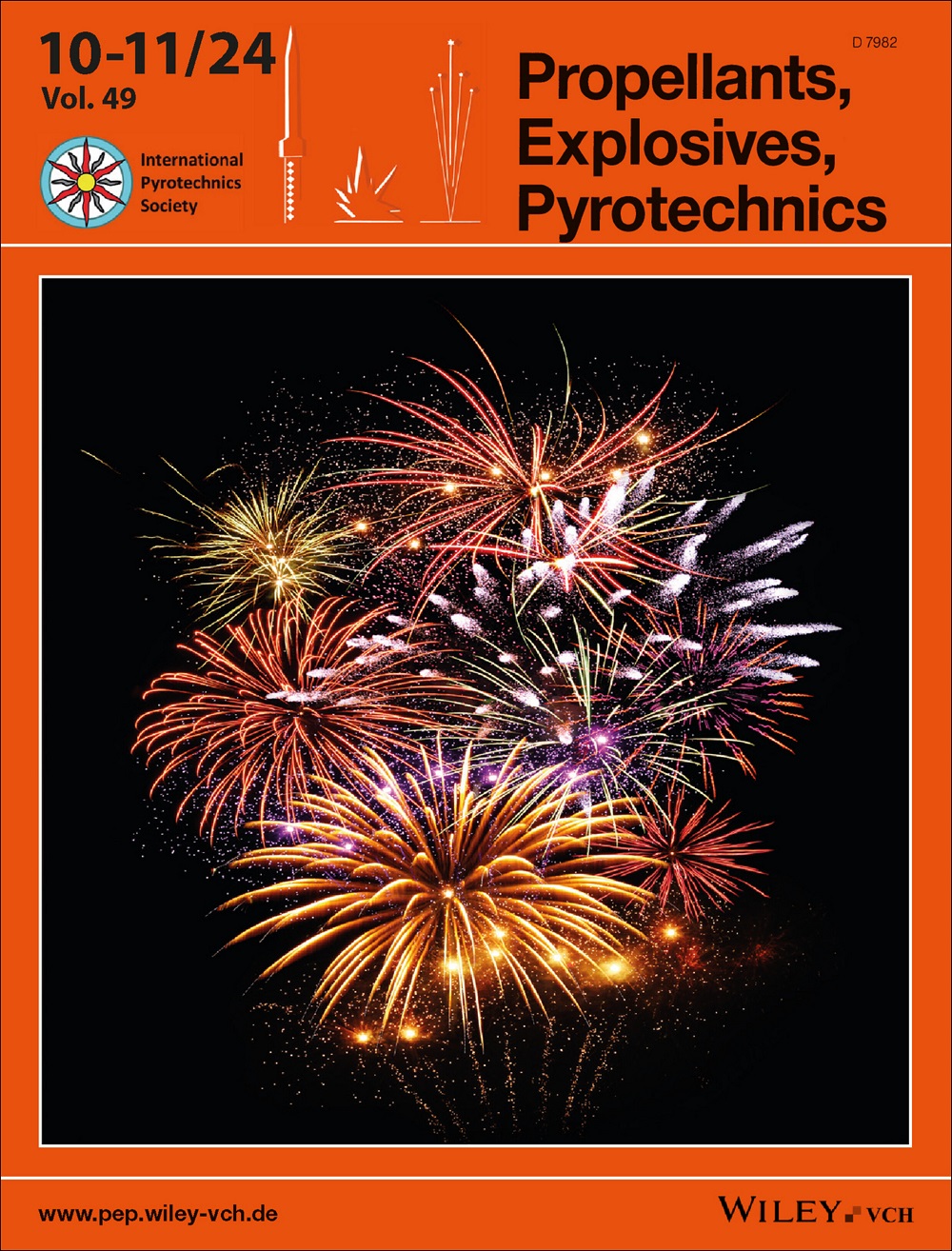Analysis method of explosive electromagnetic radiation energy
IF 2
4区 工程技术
Q3 CHEMISTRY, APPLIED
引用次数: 0
Abstract
The energy of electromagnetic radiation from explosions is coupled to electronic equipment circuits, disrupting the initiation sequence or causing failure in an increasing number of cases, which seriously affects the stability of weapon systems. There is a significant difference between the characteristics of the explosive electromagnetic radiation signals and modulated electromagnetic signals. The electric field intensity and signal power cannot directly represent the magnitude of the explosive electromagnetic radiation energy, and traditional electromagnetic signal analysis methods are unsuitable for explosion electromagnetic signal analysis. To solve this problem, the mechanism of explosive electromagnetic radiation was first analyzed. Through verification experiments of the explosion electromagnetic intensity and temperature, it was concluded that there is a strong correlation between the explosion plasma temperature and electromagnetic intensity. The temperature of the explosive plasma is derived based on the measured surface temperature of the explosive fireball, a functional relationship is established between the energy of the explosive plasma and the temperature of the plasma, and plasma energy is introduced as a parameter for electric field intensity correction. The interference signal analysis method based on eye diagram is used to calibrate the electromagnetic radiation damage ability, achieving quantitative analysis of the interference degree of electromagnetic radiation energy on the signal, and providing a new approach for the analysis of explosive electromagnetic radiation energy.

爆炸电磁辐射能量分析方法
爆炸产生的电磁辐射能量与电子设备电路耦合,破坏启动顺序或导致故障的情况越来越多,严重影响武器系统的稳定性。爆炸电磁辐射信号的特性与调制电磁信号有很大区别。电场强度和信号功率不能直接代表爆炸电磁辐射能量的大小,传统的电磁信号分析方法不适合爆炸电磁信号分析。为解决这一问题,首先分析了爆炸电磁辐射的机理。通过对爆炸电磁强度和温度的验证实验,得出爆炸等离子体温度与电磁强度之间存在很强的相关性。根据测得的爆炸火球表面温度推导出爆炸等离子体的温度,建立了爆炸等离子体能量与等离子体温度之间的函数关系,并引入等离子体能量作为电场强度修正的参数。利用基于眼图的干扰信号分析方法对电磁辐射损伤能力进行标定,实现了电磁辐射能量对信号干扰程度的定量分析,为爆炸电磁辐射能量分析提供了一种新方法。
本文章由计算机程序翻译,如有差异,请以英文原文为准。
求助全文
约1分钟内获得全文
求助全文
来源期刊

Propellants, Explosives, Pyrotechnics
工程技术-工程:化工
CiteScore
4.20
自引率
16.70%
发文量
235
审稿时长
2.7 months
期刊介绍:
Propellants, Explosives, Pyrotechnics (PEP) is an international, peer-reviewed journal containing Full Papers, Short Communications, critical Reviews, as well as details of forthcoming meetings and book reviews concerned with the research, development and production in relation to propellants, explosives, and pyrotechnics for all applications. Being the official journal of the International Pyrotechnics Society, PEP is a vital medium and the state-of-the-art forum for the exchange of science and technology in energetic materials. PEP is published 12 times a year.
PEP is devoted to advancing the science, technology and engineering elements in the storage and manipulation of chemical energy, specifically in propellants, explosives and pyrotechnics. Articles should provide scientific context, articulate impact, and be generally applicable to the energetic materials and wider scientific community. PEP is not a defense journal and does not feature the weaponization of materials and related systems or include information that would aid in the development or utilization of improvised explosive systems, e.g., synthesis routes to terrorist explosives.
 求助内容:
求助内容: 应助结果提醒方式:
应助结果提醒方式:


